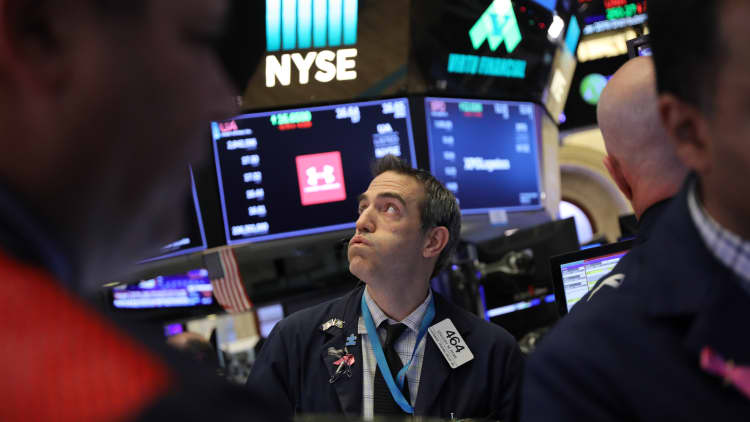
Stocks rose on Thursday, recovering some of the losses from a steep two-day sell-off amid increasing expectations that the Federal Reserve will cut rates later this month.
The Dow Jones Industrial Average closed 122.42 points higher, or 0.5% at 26,201.04. The S&P 500 gained 0.8% to 2,910.63 while the Nasdaq Composite jumped 1.1% to 7,872.26.
Tech stocks led the way higher. Facebook rose 2.7% as fellow "FANG" stock such as Alphabet and Amazon gained 1% and 0.7%, respectively. Apple closed 0.9% higher.
Despite Thursday's slight gains, the major averages were headed for their third straight weekly loss. The S&P 500 is down 1.7% week to date while the Dow has lost 2.3%. The Nasdaq was headed for a 0.9% decline for the week. That could change, however, on Friday after the U.S. government releases the latest monthly jobs report.
Wall Street entered Thursday's session amid a torrid start to the fourth quarter. The Dow lost more than 800 points in the first two sessions of the quarter after ISM posted its weakest reading on the manufacturing sector in more than 10 years, sparking concerns of an economic recession.
Wednesday's decline pushed the S&P 500 below its 50-day and 100-day moving averages, two key technical levels watched by traders. Jeff Kilburg, CEO of KKM Financial, said the broad index is staying "true to its technical behavior of 2019," noting he expects it to find support around its 200-day moving average if it approaches the level.
The weakness in U.S. manufacturing raised concern over the U.S.-China trade war's impact on the economy. The conflict started last year. Since then, China and the U.S. have slapped tariffs on billions of dollars worth of their products. Delegations from Washington and Beijing are due to meet next week in the hope of finding a consensus.
"Bottom line: Elevated uncertainty is threatening economic confidence after September's stock market bounce ran out of steam," said Willie Delwiche, investment strategist at Baird, in a note. "The manufacturing sector continues to weaken, CEO confidence is at its lowest level in a decade and the pace of private sector job growth is slowing."
Stocks briefly added to those losses on Thursday after ISM's reading on the U.S. services sector fell last month to its lowest level since August 2016. The Dow fell as much as 335.16 points, while the S&P 500 and Nasdaq dropped more than 1% each at their lows.
"We are concerned that the manufacturing slowdown is bleeding into services, but while the number was weak this morning, it was still in positive territory," said Janet Johnston, portfolio manager at TrimTabs Asset Management. "In this environment where one day you have good data and the other you have weak data, we think the best way to play it is with high-quality companies with free cash flow growth, strong balance sheets and other moats."
The major indexes soon recovered Thursday's losses, however, as the probability of a rate cut by the Fed this month increased. In fact, the Dow posted its biggest one-day reversal since Aug. 7. Expectations for an October rate cut jumped to 93.5% from 77% on Wednesday, according to the CME Group's FedWatch tool.
The Fed is scheduled to meet at the end of the month. Last month, the central bank cut rates for the second time in 2019.
"For now, bad news is good news because that's the faith in the Fed," said Jack Ablin, founding partner of Cresset Wealth. "But I fear the day, and I'm sure Chairman Powell fears the day that a rate cut isn't greeted by market enthusiasm as investors realize that's not going to move the needle very much. We're getting close to that day."
—CNBC's Elliot Smith contributed to this report.


